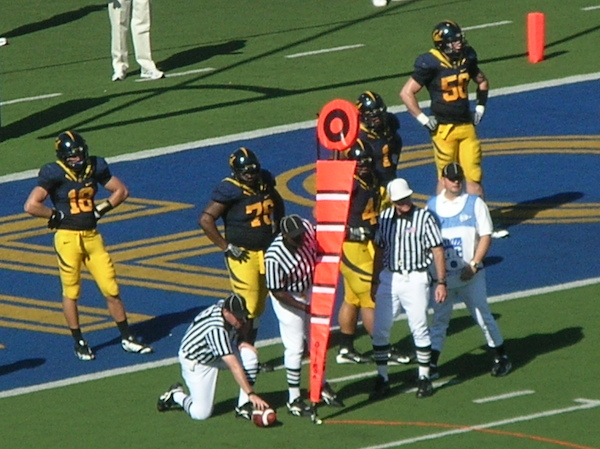Dear Sports Fan,
I’m learning a lot! I understand the downs to an extent but my question is, what does it mean when it’s 3rd and long or 3rd and 18? Does it mean that on 3rd down the offense has to cover over 10 yards? Does 3rd and 18 means that they didn’t pick up 8 yards on 2nd down so now the 8 yards are added to the 10 yards on 3rd down?
Thanks,
Susette
Dear Susette,
I’m so happy that you are enjoying and benefitting from our Football 101 email course. Thanks for sending me this question. You’ve definitely picked up the basics about down and distance which is covered in the article that first appeared on this website under the title, “What’s a down in football? I’ve been pretending to know but I don’t!” As a quick review for people who may be seeing this article without having read that one, the football team on offense has four chances to move the ball ten yards. If they can meet that geographic goal, they earn another set of four chances with a new ten yard target. The four chances are called downs, with first down being the first of the four chances, second being the second, and fourth being the last. The number expressed after the down, is the number of yards remaining to meet that original ten yard target. In most cases, as a team works on offense, that number will go down. For instance, a team that runs the ball three yards on first down only needs to move seven more yards to earn themselves another first down with a new target. This would be expressed as 1st and 10 followed by a three yard run followed by 2nd and 7. The scenario which intrigued you is what happens when the distance number goes up instead of down. How did that happen? What does it mean?
When you see a distance number that is greater than 10, the one thing you can be sure of is that something bad happened for the offense. The two categories of bad things that account for this are penalties and negative plays. If you missed the play that caused the offense to be put in its bad situation, you may not be able to tell which of the two categories it was. If you had to guess, one guide would be the number of yards to go. Because penalties are usually assessed in five yard increments, if the distance is a number divisible by five, it was probably due to a penalty.
A negative play is one that resulted in an offensive player being tackled or running out-of-bounds with the ball behind the line of scrimmage where the play started. It seems strange at first to think that an offense would ever put itself in a position to suffer such an outcome, but it’s actually quite common. For example, almost every time a quarterback takes the ball from the center, he either retreats backwards a few yards or is already positioned four or five yards behind the line of scrimmage. This distance gives him a short time (sometimes only a second or two) to survey the field and decide where to throw it. Sometimes, the defense gets to the quarterback before he can decide and tackles him. This is called a sack. The offense would have to start the next play from the location where the quarterback was tackled, behind the original line of scrimmage. If the first play was a 2nd and 10, the next one might be a 3rd and 14 if the quarterback was tackled four yards behind the original line of scrimmage. The same logic holds for plays where a running back or wide receiver is tackled behind where the ball originally started.
A penalty is another explanation for why an offense might move backward. Most offensive penalties make that down not count. Most penalties offensive penalties supersede whatever the result of the play was and force that down to be replayed. This is why you sometimes see a team “decline” a penalty. This is a decision the team that the foul was called in favor of might make if the result of the play was more favorable to them than the penalty would be. A penalty on first and 10 could result in a first and 15, 20, or even 25 depending on the infraction.
While it’s impossible to say exactly what lead to a team having a 3rd and 18, my guess is that it resulted from a 10 yard penalty on a play that was run from 3rd and 8. Eight yards seems like too far to be the result of a common negative play, and a 3rd and 8 is not an uncommon situation. Third and “long” is just an expression. It doesn’t really have an exact meaning, but I would say that anything over seven yards could be considered “long.” Certainly anything over ten yards — which you now know to be the result of a penalty or negative play — would be considered “long.”
Thanks for reading,
Ezra Fischer

